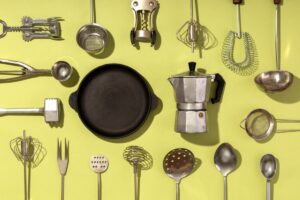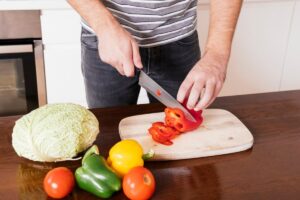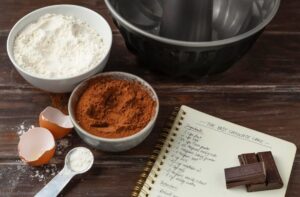The Food Blog
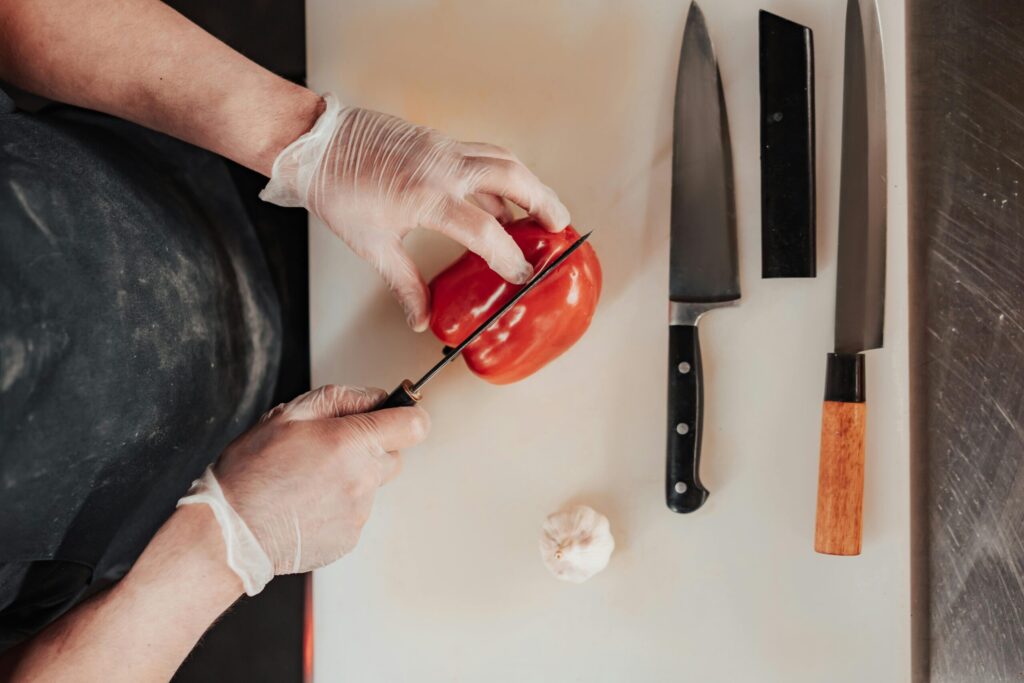
How to Properly Use Knives: A Beginner’s Guide
A well-sharpened knife is one of the most indispensable tools of any kitchen. Whether you are a novice cook or an aspiring chef, learning knife skills can help make you more efficient, safer, and more precise when cooking food. Choosing the right kitchen knives, caring for them, and using good-cutting techniques can make cooking fun. These skills lead to professional-quality results.
Knife skills go beyond just cutting. They affect the texture of your ingredients and the dish’s overall look. A good cut helps food cook evenly. It also keeps you safe and makes cooking quicker and more fun.
In this guide, we’ll discuss knife handling. We’ll cover how to chop vegetables, grip techniques, and essential cuts. By the end, you’ll have the confidence to tackle any recipe with ease.
1. Choosing the Right Knife
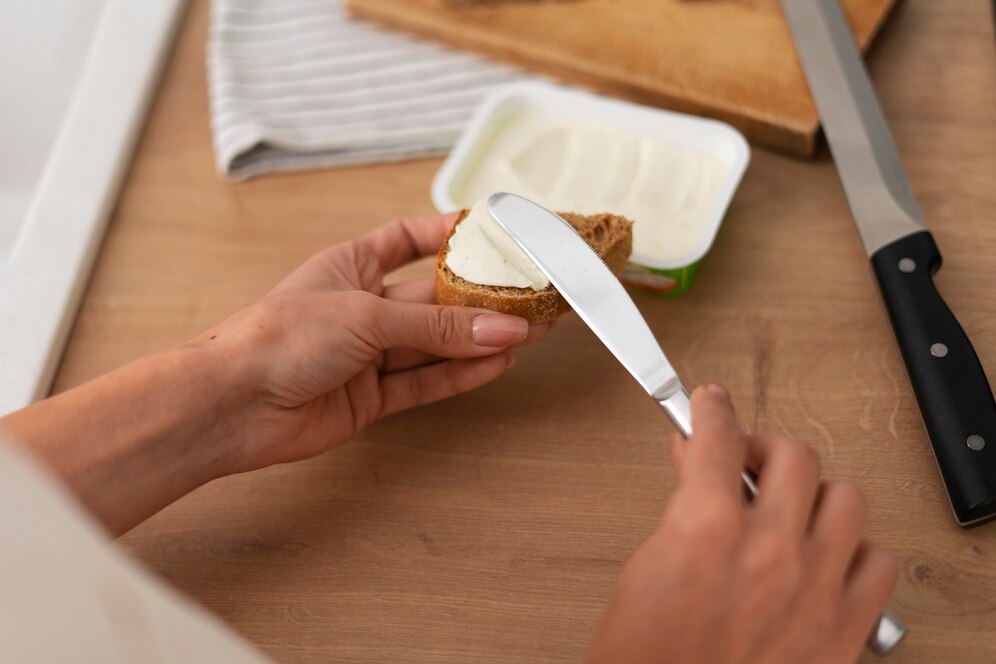
Selecting the best kitchen knives depends on the tasks you frequently perform. The right knife can make a huge difference in precision, safety, and comfort. Investing in a few high-quality knives will serve you better than having a large set of dull, low-quality ones.
1.1 Essential Knives for Every Kitchen
- Chef’s Knife (20 cm / 8 inches) – A versatile all-purpose knife for chopping, slicing, and dicing. This knife should be your go-to for most kitchen tasks.
- Paring Knife (9-10 cm / 3.5-4 inches) – Ideal for peeling, trimming, and making small, precise cuts. A great tool for working with fruits and small vegetables.
- Serrated Bread Knife (20-25 cm / 8-10 inches) – Best for slicing bread, tomatoes, and delicate pastries without crushing them.
- Boning Knife (12-15 cm / 5-6 inches) – Designed for trimming fat and deboning meat or fish. The flexible blade allows for precise cuts.
- Utility Knife (15 cm / 6 inches) – A mid-sized knife for miscellaneous cutting tasks when a chef’s knife is too large.
1.2 How to Choose a Good Knife
- Look for high-carbon stainless steel blades for durability and sharpness. These knives hold their edge longer and resist rust.
- Opt for a full tang knife (where the blade extends through the handle) for better balance and control.
- Test the grip – a comfortable, well-balanced handle prevents hand fatigue during prolonged use.
- Consider weight preference – heavier knives offer more power. Lighter ones provide agility and control for delicate tasks.
2. Knife Safety Basics
Before diving into how to chop vegetables, it’s crucial to practice knife safety to avoid accidents. Even a minor mistake can lead to serious injuries, so proper handling is key.
2.1 Safe Knife Handling Tips
- Always keep your knives sharp—a dull knife is more dangerous than a sharp one since it requires more force and is prone to slipping.
- Use a stable cutting board, preferably wood or rubber, to prevent slipping. Avoid glass or ceramic boards as they dull knife blades quickly.
- Curl your fingers inward (claw grip) when holding food to keep fingertips safe.
- Never leave knives in the sink—clean and store them immediately after use to prevent accidents.
- Cut away from your body and maintain full control over the blade at all times.
- Store knives properly to avoid accidental cuts when reaching into drawers.
2.2 Proper Knife Grip for Control and Precision
A correct grip ensures safety and efficiency when cutting. The two primary grips are:
- Pinch Grip: Hold the blade near the bolster (where the blade meets the handle) between your thumb and index finger for better control. This technique offers precision and stability.
- Handle Grip: Hold the knife by the handle only—this is easier for beginners but offers less precision than the pinch grip.
3. Fundamental Cutting Techniques
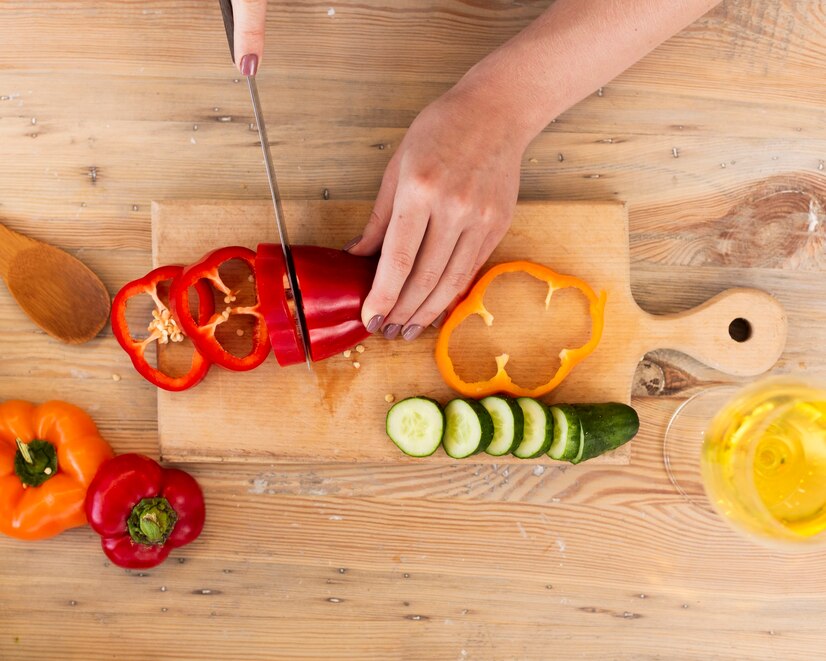
Now that you know how to handle a knife safely, let’s explore the basic cuts that every home cook should master. Each cut has a specific purpose, helping you control texture, cooking times, and presentation.
3.1 How to Chop Vegetables Properly
Chopping is the most common knife skill, used for prepping onions, garlic, peppers, and more.
Step-by-step guide:
- Place the vegetable on a stable surface and cut it in half for stability.
- Use the rocking motion technique—keeping the tip of the knife on the cutting board while moving the blade up and down.
- Keep your other hand in a claw position to guide the food and protect your fingers.
- Chop uniformly to ensure even cooking.
3.2 Slicing and Dicing
Slicing is used for creating thin, even pieces, such as for tomatoes or cucumbers. Dicing involves cutting food into small, uniform cubes—perfect for onions, potatoes, and carrots.
Dicing techniques:
- Small Dice (Brunoise) – 3mm cubes, used for garnishes.
- Medium Dice – 6mm cubes, common for soups and stews.
- Large Dice – 12mm cubes, ideal for roasting or sautéing.
3.3 Julienne and Batonnet Cuts
- Julienne (Matchstick Cut) – Thin strips, about 3mm wide, used for carrots, bell peppers, and potatoes.
- Batonnet (Stick Cut) – A thicker version of julienne, about 6mm wide.
- Chiffonade (Shredding Leaves) – Stacking and rolling leafy greens like basil or lettuce. Then slicing into thin ribbons.
4. Knife Maintenance: Keeping Your Knives Sharp
A well-maintained knife makes cutting easier and safer. Here’s how to care for your kitchen knives:
4.1 How to Sharpen and Hone a Knife
- Honing (Daily Maintenance) – Use honing steel to realign the blade’s edge before each use.
- Sharpening (Monthly Maintenance) – Use a whetstone or hire a pro to sharpen a dull edge.
4.2 Proper Knife Storage
- Store knives in a knife block, magnetic strip, or knife drawer insert to prevent blade damage.
- Avoid tossing knives into drawers, as this can dull and chip the blades.
- Use blade guards for added protection when storing knives in a drawer.
5. Advanced Knife Techniques for Home Chefs
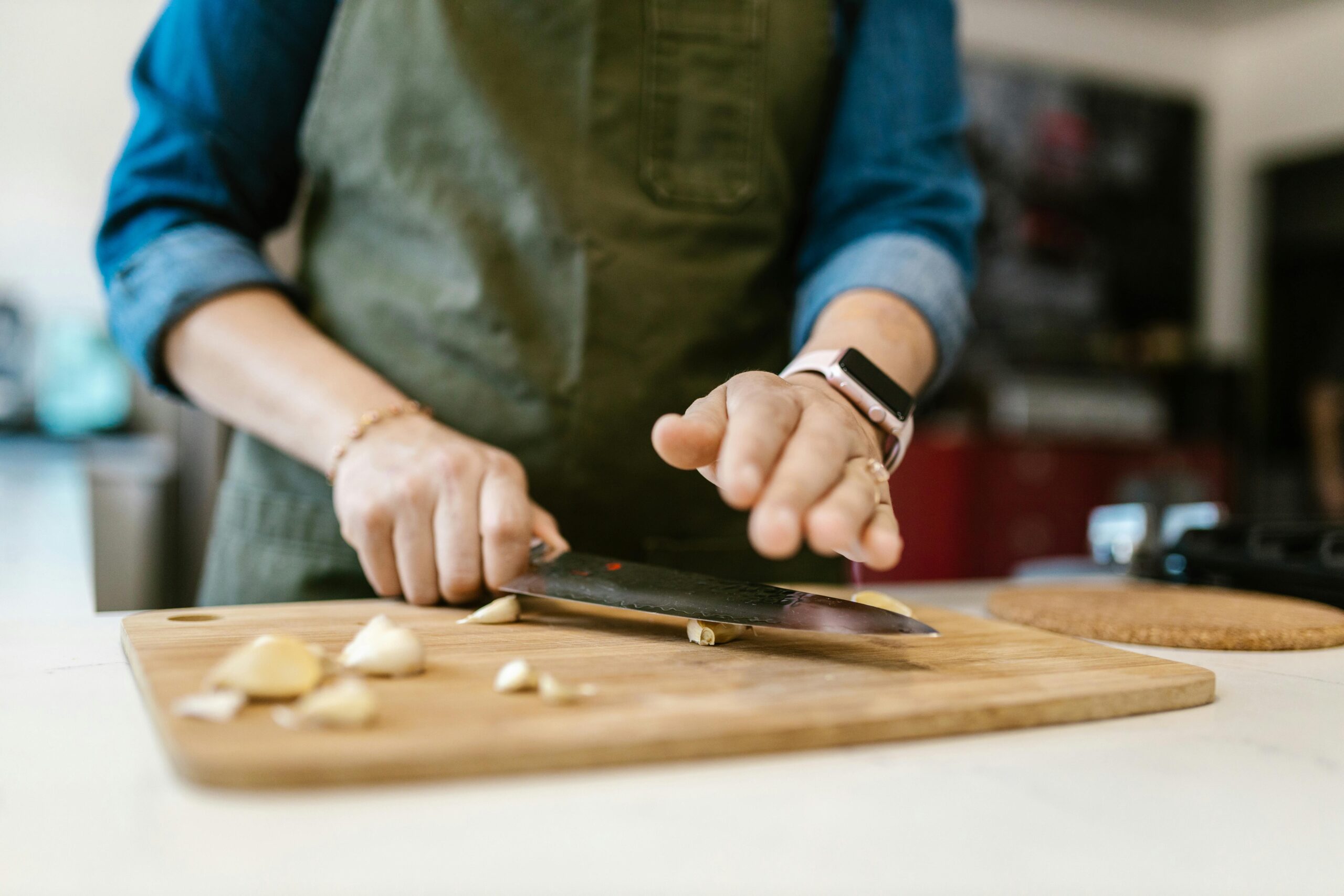
Once you’re comfortable with basic cuts, you can experiment with more advanced techniques:
- Rock Chop – Keeping the knife tip on the board while moving the handle up and down for fast chopping.
- Tap Chop – Lifting the knife completely off the board between each chop, useful for precision work.
- Horizontal Slicing – Cutting parallel to the board, such as when butterflying chicken breasts.
- Tourne Cut – A classic French technique for cutting vegetables into barrel shapes for uniform cooking.
Knife Skills for Every Cook
Mastering knife skills is the first step toward becoming a confident home cook. To boost safety and efficiency in cooking, pick the best kitchen knives. Use the right grip and practice basic cutting techniques.
Ready to put your knife skills to the test? Grab a cutting board, sharpen your knife, and start practising your chopping techniques today! Do you have any knife-related tips or questions? Share them in the comments below!



